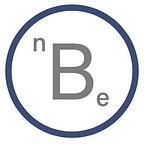On Chicken-and-egg Dynamics
Decision-making, game theory and the art of building trust.
Let’s start by stating the obvious: We don’t have a magic formula for reversing established chicken-and-egg dynamics.
The dilemma is not new to anyone by any means and happens every time each of two things appears to be necessary to the other, making it impossible to say which should come first.
At its core, it is a decision-making challenge compounded by a degree of unknowables. A challenge that gets more interesting as you grow the required upfront investment and player’s interdependence.
Many industries faced this barrier, which later became flywheels for leading participants. For example, during its early days, a food-delivery app starts with no restaurants and no customers. It’s hard for the app to convince a restaurant to join a platform with no users. And not having restaurants onboard makes it unappealing to potential customers, making it even harder to make progress on the initial step.
Why should someone entertain building the application in the first place? Well, if you succeed in scaling both users and restaurants, the inertia would revert, turning the challenge into a powerful flywheel. It would become unwise for a new restaurant not to join when users are running in, while a wide variety of offerings should make it super attractive to prospective users.
How do you go from one scenario to the other?
Game theory predicts that players always pursue their best interests. In the case of the delivery app, those would be to save time and effort and postpone joining until there are enough players on the other side of the virtual counter. Of course, this rationale also threatens the ultimate value. If both sides could trust that the other would join, their benefit could be orders of magnitude higher than anything they could have saved by not joining.
Unlocking value through trust
In the delivery app example, restaurant variety, delivery speed, or low prices would be the potential value waiting to be unlocked by cooperation. App builders often use elements such as free trials, long-term perks, or well-known personalities supporting the app to build trust and encourage players to change their rational choice and pursue the ultimate value.
When we started NewBalance Energy, we had a mission to unlock the trade of green hydrogen produced in South America.
The chicken-and-egg dynamics were apparent. Green hydrogen production requires extremely high upfront investments and very long-term horizons. Very few players, if any, can embark on this journey without having a clear context or defined notions on future demand, including acceptable prices, volumes, definitions for green certificates, and more. From the demand perspective, committing early on could mean you’re overpaying, getting inferior quality, or simply not benefitting from technological advances that could come as the industry scales and matures.
As long as these premises stay dominant, we should expect very little progress in either direction, even when the ultimate value behind declared hydrogen strategies is orders of magnitude higher than what participants could be saving by not committing.
NewBalance emerged as an independent participant to build trust, encourage cooperation and revert those dynamics. Our independence from established players is critical as we develop the groundwork for building trust between producers and off-takers.
Our path for building trust resides in reducing established uncertainties and creating ways for measuring the level of competitiveness and reliability of a production project upfront.
Developing this set of evaluation systems is a journey on its own. One that involves a vast team of world-class engineers with a wide variety of backgrounds, turning hundreds of thousands of multi-region qualitative and quantitative data points into a comprehensive set of due diligence protocols and pro forma processes. We call this body of knowledge Hydrogen Production Qualification Standards (HPQS). It enables like-for-like comparisons across projects and provides them with a roadmap and a quality framework powered by proprietary data. It gives off-takers assurance for quality and competitiveness and a level of predictability into the future supply chain, allowing them to evolve their business strategies, infrastructure, etc.
And still, many unknowns remain.
For example, we can define a way to measure the competitiveness of a project. We can also estimate safe ranges for its future production costs based on known variables and safe assumptions. But pinning down a dollar cost per kilo of hydrogen at the gate during the feasibility studies phase would be unrealistic.
At this point, the art of decision-making comes in.
Forward-looking organizations combine their transition strategies, price and time-frame sensitiveness, and demand forecasts with our work.
To turn the trust that we build into unlocking the value behind a transition strategy, we operate under comprehensive and milestone-driven agreements that allow us to track performance, adjust as we progress, and evolve into off-take agreements. Bringing down the level of unknowables and working under comprehensive partnership agreements is NewBalance’s way of unlocking the value behind powerful transition strategies.
With time, and as stated above, those should also become flywheels:
The more projects we can empower => better the CAPEX/shared infrastructure efficiency => more competitive prices => better predictability => greater demand => repeat.
These are still early days for NewBalance and green hydrogen in general. And as it’s always the case with big transitions, each step in the right direction compounds over time into transformative shifts. Given the current enthusiasm, if we want to realize the hydrogen opportunity tomorrow, the time to be making those steps is today.
